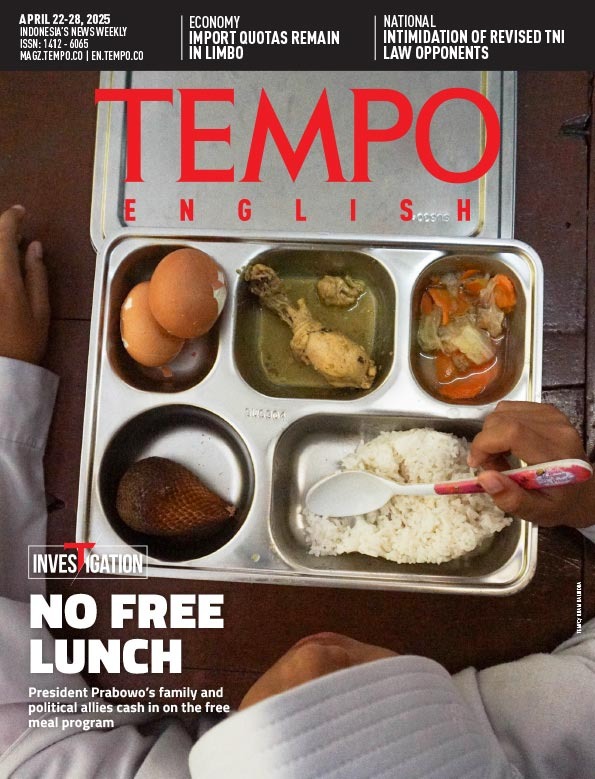The Disarray in Our Prison Management
Monday, December 2, 2024
The problem of overcrowding in jails has never been resolved. The law enforcement authorities need to put forward alternatives to punishment.
arsip tempo : 174563706575.

THE news about the escape of seven prisoners from Salemba Detention Center, Central Jakarta, did not come as a shock at a time of disarray in our penitentiary system. Escaping prisoners are only one part of the chaotic state of our jails, from disarray within the prison service and illegal levies demanded by prison guards to the distribution of illegal drugs controlled from behind bars.
The government has never carried out proper improvements to the management of jails, meaning that prison escapes and other similar examples of chaos continue to occur. According to Tempo’s records, there have been at least 11 riots and prison escapes in the last five years, including at Salemba. The worst example was the escape of 53 prisoners from Sorong Prison, Southwest Papua in January this year. Just before that, dozens of prisoners caused disarray by threatening guards and throwing firecrackers.
One of the causes of all this disarray in the management of our correctional facilities is overcrowding. According to the Immigration and Penitentiary Affairs Ministry, in 2024 there are more than 270,000 detainees and convicts, while the capacity of prisons is only 145,000. This overcrowding has caused psychological problems for prisoners. As a result, they easily give in to their emotions and trigger conflicts, try to escape and cause trouble in other ways.
The overcrowding in correctional facilities is caused by the law enforcement paradigm that is still oriented towards jailing people as a way of dealing with criminal cases. People have a perception that the success of law enforcement is measured in the ability to put perpetrators in cells. Therefore, law enforcement officials ignore the fact that there are other ways to improve the conduct of criminals. For example, it is better to send drug users to rehabilitation facilities than to prisons. Drugs convicts and detainees are the reason detention houses are overcrowded because they number more than 120,000 individuals, or almost half of the total population of prisons across Indonesia.
And it is by no means certain that an orientation towards jailing people is a successful way to break the chain of crime. Locked up in their cells, criminals are initially expected to improve themselves and learn their lesson. It is believed that the longer the sentence, the greater the deterrent effect. But the fact is prisons are actually becoming training grounds that turn petty crime convicts into major criminals. In many drugs cases, people who were initially only drug traffickers end up controlling narcotics networks because they have been associating with dealers.
There needs to be a change in the orientation of punishment in our criminal justice system, which has long simply confined people in cells, in order to improve the chaotic state of our jails. Law enforcement officials and the courts have been too eager to send small time offenders such as drug addicts to jail. They must have the courage to recommend that drug users undergo rehabilitation and impose community service orders on those convicted of petty crimes.
Allowing the disarray in the management of detention houses to continue opens up the possibility of more escapes and riots events occurring in the future.











